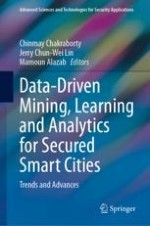This book provides information on data-driven infrastructure design, analytical approaches, and technological solutions with case studies for smart cities. This book aims to attract works on multidisciplinary research spanning across the computer science and engineering, environmental studies, services, urban planning and development, social sciences and industrial engineering on technologies, case studies, novel approaches, and visionary ideas related to data-driven innovative solutions and big data-powered applications to cope with the real world challenges for building smart cities.
